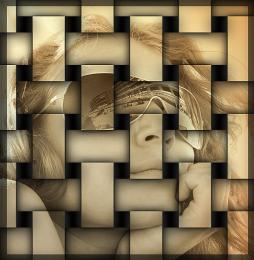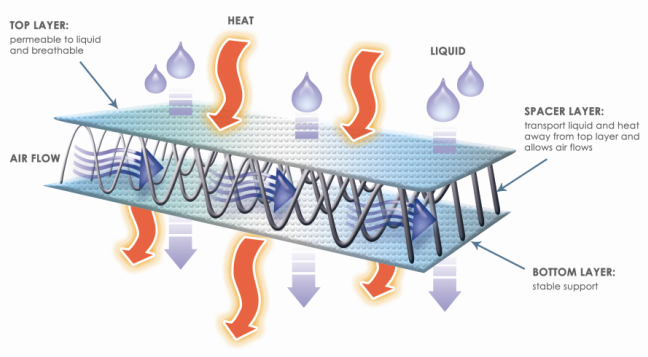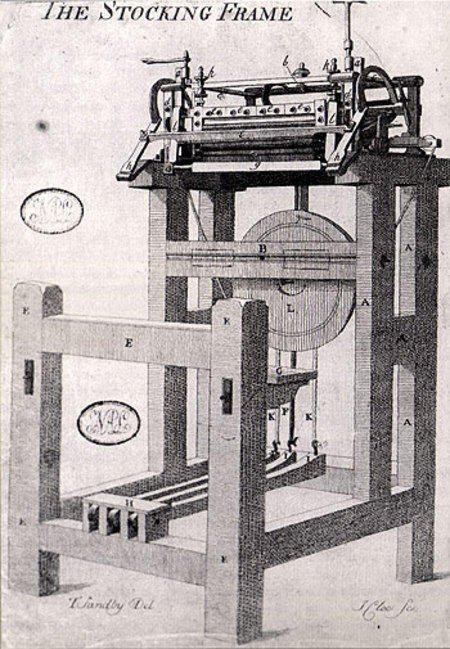
- •Content
- •Module 1
- •II Read the following words and word-combinations which will help you to understand the text
- •III Read and translate the following text Textiles. Textile industry
- •III Answer the questions:
- •IV Complete the sentences with the words from the text and translate them:
- •V Read the words from the Ex.1. Look through the text again and find out the sentences with them. Make up your own sentences with these words
- •VIII Translate the sentences into English:
- •Reading and writing skills
- •I Quickly read the text below. Choose the main topic discussed in the text
- •II Read the text again and choose heading for each paragraph
- •II What do these words and phrases mean? Check their meanings from the dictionary
- •III Transform the following sentences according to the models
- •IV Try to reproduce the dialogs on the topic «Finding a job»
- •II Read and translate the following text Textile specialists training in Ukraine
- •III Answer the questions
- •IV Complete the sentences with the words from the text and translate them
- •V Translate the sentences into English
- •Reading and writing skills
- •I Answer these questions about yourself with complete sentences
- •II Using your answers (ex.I) complete the gaps in this description
- •III Read the text. Think about the title of it
- •IV Read the text again and choose heading for each paragraph
- •II Write down responses for the questions
- •III Role play
- •Module 2
- •III Answer the questions
- •II Read the text again and divide the text into logical parts. Headline each of the parts
- •II Listen to the text «Flax, its properties and use» and try to understand it. Choose the proper variant for each of the statements below
- •III Listen to the text once more and note down the properties of flax and the textiles made from it Communicative Skills
- •I Read the dialogues and try to understand them
- •II Write down questions from the dialogues for the following responses
- •III Role play
- •Unit 4. Yarn production
- •I Read and remember the translation of words and word-combinations
- •II Read and translate the following text The production of yarns
- •III Answer the questions
- •IV Complete the sentences with the words from the text and translate them
- •V Read the words from the Ex.1. Look through the text again and find out the sentences with them. Make up your own sentences with these words
- •VIII Translate the sentences into English
- •Reading and writing skills
- •I Quickly read the text below. What is the main topic discussed in the text? Headline the text
- •II Read the text again and choose heading for each paragraph
- •Communicative Skills
- •Module 3
- •II Read and translate the following text: Methods of fabric production
- •III Answer the questions
- •IV Complete the sentences with the words from the text
- •II Read the text again and choose heading for each paragraph
- •II Write down questions from the dialogues for the following responses
- •III Role play
- •Comprehensive Skills
- •I Read the words which can help to understand the information you will listen to now
- •Unit 6. Properties of fabrics
- •I Read and remember the translation of words and word-combinations
- •II Read the following words and word-combinations which will help you to understand the text. Work with a dictionary to find their meaning. Check their meaning from the context
- •III Read and translate the following text Characteristics of textile materials. Aesthetic properties
- •Aesthetic properties
- •IV Answer the following questions
- •V Find Ukrainian equivalents to the words
- •VI Translate the following word-combinations into English:
- •VII Translate the following sentences into English
- •Reading and writing skills
- •I Read the text to find out some more information about properties of fabrics. Make a list of the main terms and check their meanings The functional properties of fabrics
- •II Match some functional properties of fabrics from the box with their explanations
- •III Make a plan to give an annotation of the topic «Properties of fabrics»
- •II Rewrite Dialogue 1 as if you are buying a pair of jeans, Dialogue 2 as you are buying a pair of trousers. (Don’t forget that these things are in plural)
- •III Role play. Perform your own situations in a clothing store Project work
- •Revision. Self-check
- •I Translate the terms given below (5 points)
- •II Match the terms (Task I) with their descriptions (10 points)
- •III Translate the sentences into English (10 points)
- •Module 4
- •II Read and translate the following text
- •Information technologies in production
- •III Answer the questions
- •XI Fill the gaps to compare computers now and ten years ago. Use the adjectives in brackets
- •Reading and writing skills
- •I Read the text and find information which was not given in the text «Information technologies in production»
- •II Look through the text again and make a list of terms, work with a vocabulary to check their pronunciations and meaning
- •II Put the words in the right order
- •III Role play
- •Unit 8. Technical textiles
- •I Read and remember the translation of words and word-combinations
- •II Read and translate the following text Technical textiles
- •III Answer the questions
- •III Render the text in a written form Comprehensive skills
- •I Read the words which can help to understand the information you will listen to now
- •II Listen to the text «Smart clothing» and try to understand it
- •III Listen to the text one more time and decide if the following statements are true or false. Correct the wrong sentences
- •Communicative Skills
- •II How would you answer these questions?
- •Revision. Self-check
- •I Give the full names of the terms and give their translation (5 points)
- •II Read the text and write 5 questions about given information (5 points)
- •III Translate the following sentences into English (10 points)
- •Additional Section
- •Як працювати з текстами на прослуховування (аудіювання)
- •Як підготувати презентацію
- •Useful Phrases
- •Як працювати з новим текстом без наявності словника
- •Як працювати з двомовним словником
- •II етап
- •IV етап
- •Що таке анотування та реферування тексту
- •Як зробити реферування тексту
- •Як анотувати текст
- •Answer keys to “Revision. Self-check” Section Module 1
- •Module 2
- •Module 3
- •Module 4
- •Glossary
- •Vocabulary Unit 1
- •Unit 2
- •Unit 3
- •Unit 4
- •Unit 5
- •Unit 6
- •Unit 7
- •Unit 8
Module 3
Fabrics production and their properties

Unit 5
Methods of fabric production

Unit 6
Properties of textile
UNIT 5. Methods of fabric production
I Read and remember the translation of words and word-combinations
braiding ['breɪdɪŋ] обплетення
interlooping [ɪntə'lu:pɪŋ] петельне переплетення
intersection [ɪntə'sekʃən] – перехрещення
intertwining [ɪntət'waɪnɪŋ] скручування
interweaving [ɪntə'wi:vɪŋ] переплетення
knotting [nɔtɪŋ] скріплення вузлами
manipulating [mənɪpju'leɪtɪŋ] – перетворення
selvedge ['selvɪdʒ] – край
sinew ['sɪnju:] сухожилля
straight-edged fabric [streɪt edʒd] – тканина з рівними краями
tear-resistant sails [tɪə rɪ'zɪstənt seɪlz] – міцні на розрив вітрила
warp [wɔ:p] основа
weft [weft] уток
weft knitting [weft nɪt] – кулірний трикотаж
II Read and translate the following text: Methods of fabric production
Man's first articles of clothing and furnishing were probably animal skins, sometimes stitched together using bone needles and animal sinews. But people soon learned to manipulate fibrous materials into textile fabrics, encouraged by experience gained from interlacing branches, leaves and grasses in the production of primitive shelters.
The mechanical manipulation of yarn into fabric is the most versatile method of manufacturing textile fabrics for a wide range of end-uses.
There are three principal methods of mechanically manipulating yarn into textile fabrics: interweaving, intertwining and interlooping. All three methods have developed from hand-manipulated techniques.
Interweaving is the intersection of two sets of straight threads, warp and weft, which cross and interweave at right angles to each other. Weaving is the oldest and most common method of producing of straight-edged fabric.
Intertwining and twisting include a number of techniques, such as braiding and knotting, where threads are intertwined with each other at right angles or some other angle. The products which are produced by this method are limited to very specific purposes.
Interlooping consists of forming yarn(s) into loops. The loops are held together by the yarn passing from one to the next. Knitting is the most common method of interlooping and goes next after weaving as a method of manufacturing textile products.
 The
present knitting industry is based on the invention of William Lee,
who succeeded in the mechanisation of the interlooping of yarn four
hundred years ago. A marked development in this technology has taken
place over the last fifty years. Today knitted fabrics have found
their way into almost every field of application of textiles. Some
areas of their application include socks, stockings, underwear,
pullovers, jackets, frocks, blouses, suits, winter overcoats,
bed-sheets, pillowcases, baby clothes, curtains, carpets, upholstery
materials, table cloths and artificial fur.
The
present knitting industry is based on the invention of William Lee,
who succeeded in the mechanisation of the interlooping of yarn four
hundred years ago. A marked development in this technology has taken
place over the last fifty years. Today knitted fabrics have found
their way into almost every field of application of textiles. Some
areas of their application include socks, stockings, underwear,
pullovers, jackets, frocks, blouses, suits, winter overcoats,
bed-sheets, pillowcases, baby clothes, curtains, carpets, upholstery
materials, table cloths and artificial fur.
The two basic categories of knitted fabrics are: weft (sometimes called filling) and warp knits. The terms weft and warp are borrowed from weaving terminology. Weft knits are formed by yarns that travel across the width (weft direction) of the textile. Weft knitted fabric is generally highly elastic and highly drapeable, two attributes, which make it suitable for a wide range of apparel applications. Weft knitted fabric is porous and comfortable both for outer garments and undergarments. The warp knits are formed by yarns that travel the length (warp direction) of the textile, generally.
A new and rapidly developing trade in the knitting industry is the production of technical textiles and composites. New products are developed daily; in most cases knitted structures are replacing expensive and heavier constructions traditionally manufactured from other materials. Some interesting industrial applications are warp knitted sacks, high quality warp knitted flags, blood arteries, filter materials, tear-resistant sails, floor coverings and 3-D knitted preforms for composite components.
